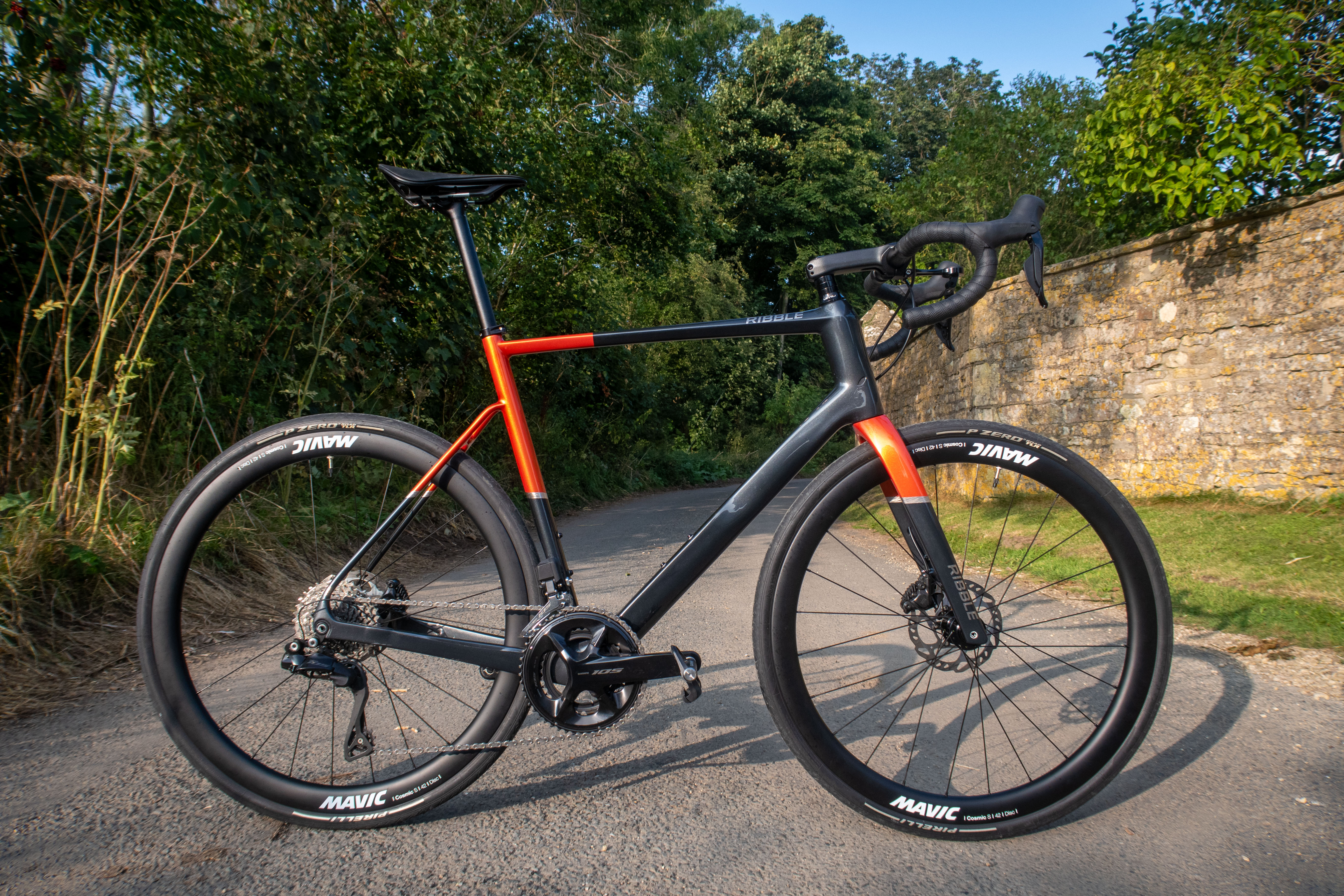
In July 2024, Ribble launched a trio of endurance bikes under its Allroad banner, to satisfy the growing number of roadies with an appetite for riding more adventurous surfaces. Light, fast gravel anyone? Check. Pothole-strewn country lanes and broken tarmac? Check.
Of the three bikes, the Allroad SL is the humble, entry-level model. Above it sits the more focussed SL R – think more refined aero features and higher-grade carbon – and its Mahle X20-powered e-bike sibling. All have been developed using an approach Ribble calls Road+ – namely fast, agile road bikes that aren’t constrained by the confines of tarmac.
Since the launch, I have spent hours putting hundreds of kilometres on my Allroad SL loaner, which arrived factory fresh, fully loaded in top-tier Pro spec. But before we get into the riding experience, let’s rewind to discover what inspired Ribble to introduce the Allroad SL in the first place.
R872 evolved
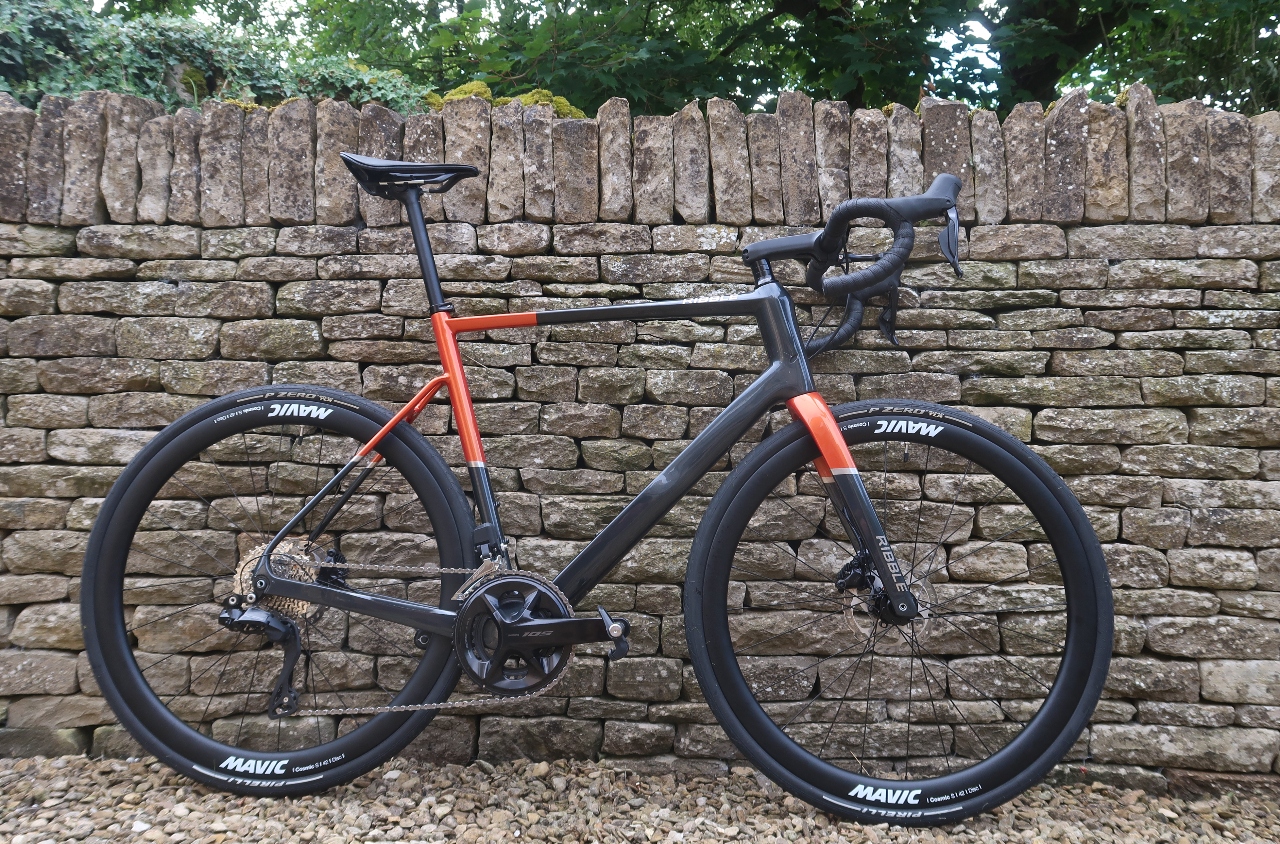
The Allroad SL is a direct descendant of Ribble’s successful R872 model, a keenly priced performance-oriented endurance bike that has won many accolades, including Cycling Weekly’s Editor’s Choice award twice over.
In profile, to the casual eye, the frame silhouettes are nearly identical, with the SL’s slightly chunkier fork the only obvious visual giveaway. Studying the geometry sheet does reveal some differences though. Predictably, the most significant is the increased tyre clearance, up from 32mm to 35mm, which almost certainly accounts for the longer chainstays. These have increased 5mm to 415mm, stretching the overall wheelbase for a size M (approx 54) to 986mm, up just under 6mm. Reach, at 378mm, is essentially the same, but stack has been increased by 8mm to 562mm. The head angle and seat angle are the same at 73 degrees and 73.5 degrees respectively.
So, what do all these figures mean in real-world riding conditions? The R872 was developed with performance endurance geometry, rather than the tight, long, low-slung stance of a true race bike. Which is fine, it’s a bike that was intended for swift yet spun-out sportifs rather than rapidly executed crits. The Allroad is a modern take on this, the extra length should give it a little more stability while the increased stack height will provide a bit more comfort without robbing it of too much speed. After all, it’s lower than some rivals, such as the Specialized Roubaix.
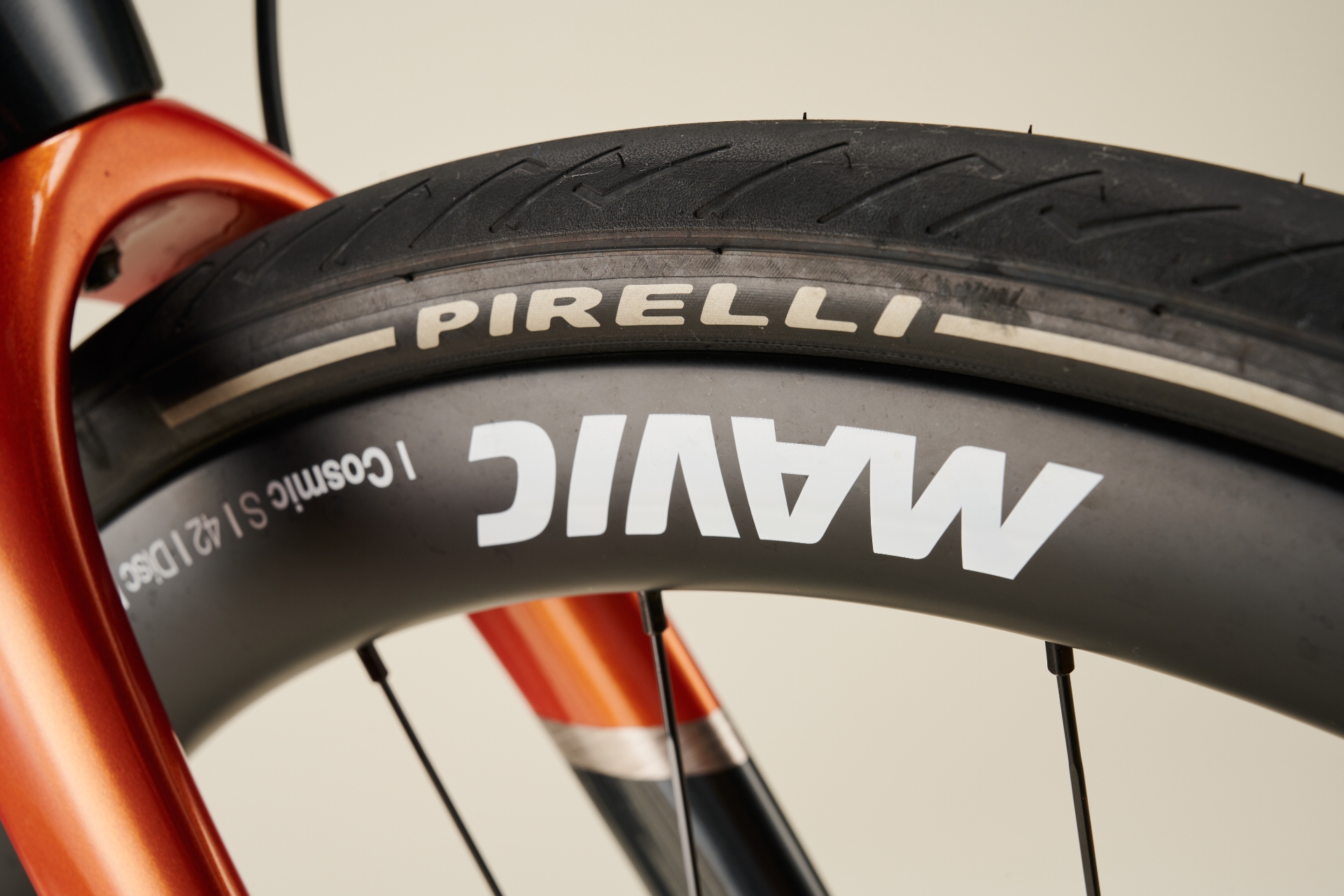
The most significant difference in the specs, which can be felt immediately, is the increased tyre width, a change that breathes new life into this mature platform. Where the R872 ships with 28mm tyres, the SL is shod with more contemporary 32s, and there’s enough clearance to fit 35c rubber. This additional volume provides the opportunity to run lower pressures, which brings more comfort, better grip and the ability – liberty, if you like – to explore previously inaccessible routes.
The Allroad SL’s frame and fork are engineered primarily from T700 carbon fibre, with a mix of higher grade T800 used where additional stiffness is required, such as the drivetrain area. This is a step up from the R872 but inferior to the premium layup of the SL R, which uses a combination of T1000 and M46 carbon.
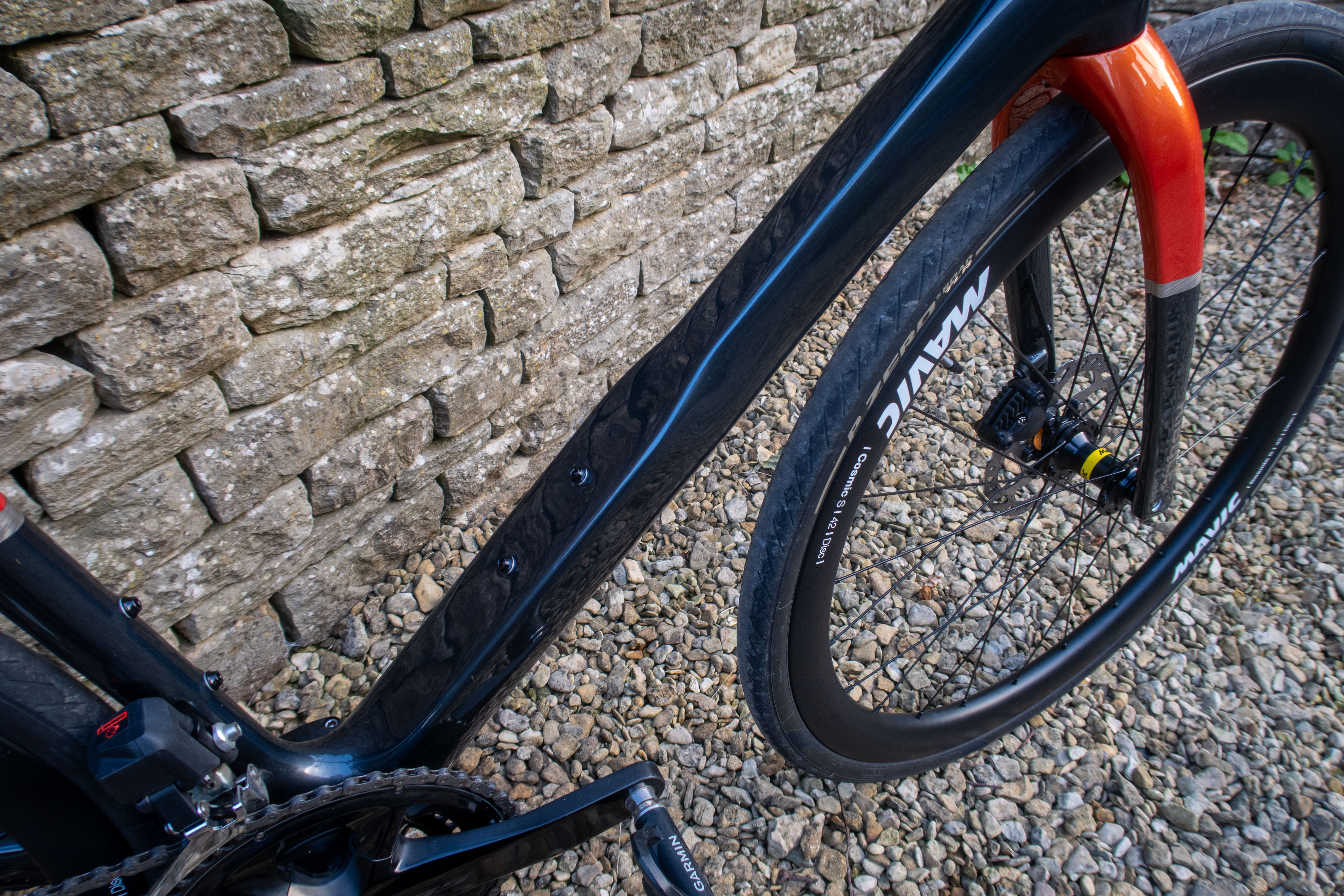
The SL shares the SL R’s wind-cheating downtube profile, which, in turn, is borrowed from Ribble’s uncompromising Ultra SL R aero race bike. The profile flares from the mid-section down – from around the cage mounts - making the bike more aerodynamic with a bidon than without.
Beyond the forks, which are broad and relatively deep-bladed, there’s little else that’s overtly aero about the SL. The bars are wide, with a regular, semi-oval tube shape, and the hoses are externally routed around the headset until they disappear into the fork and downtube. No full internal routing to fret about here.
Neatly hidden mounts exist for guards/fenders but there are no fixings for racks, which may make bike packing on the Allroad more awkward for some.
Suggested builds
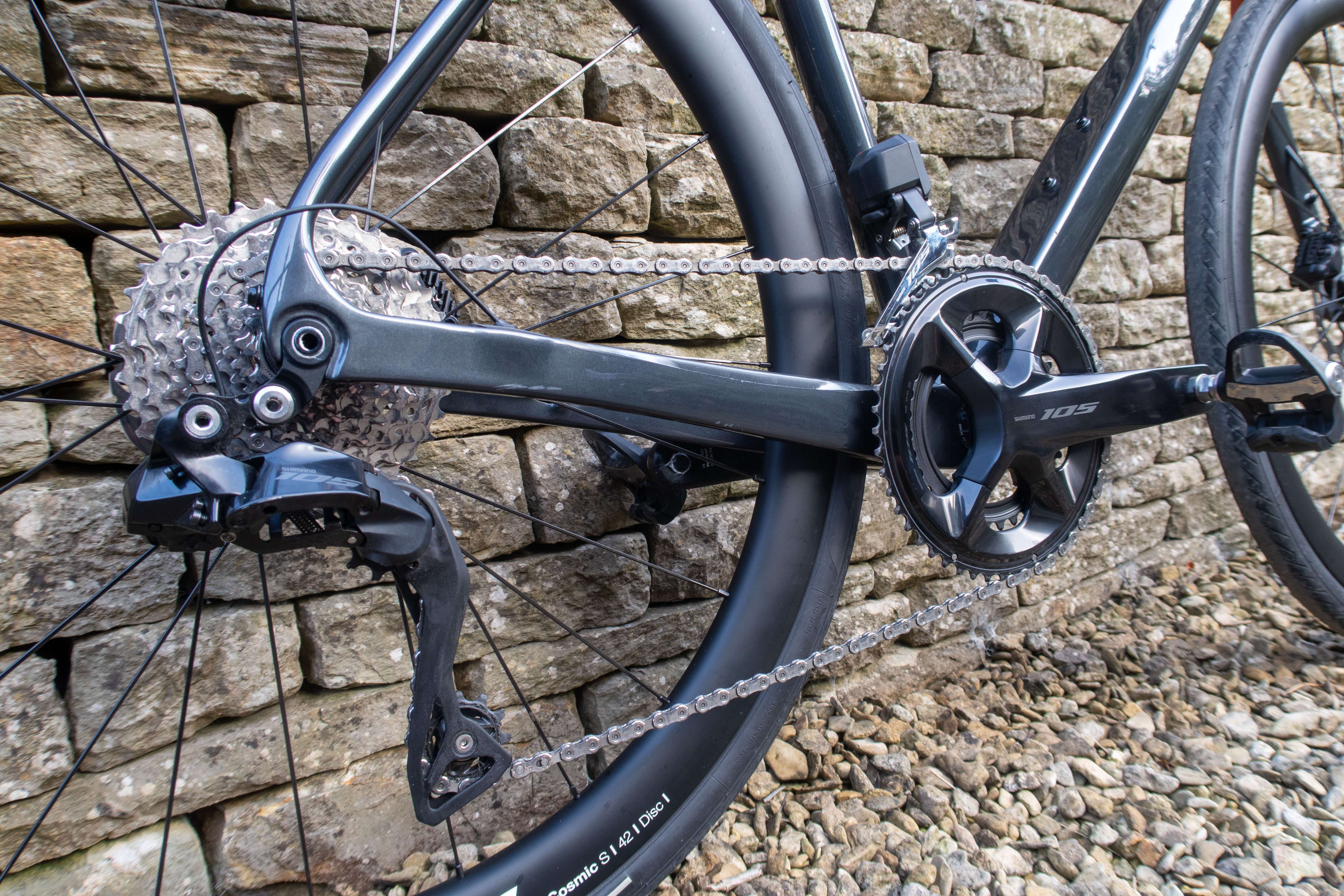
Ribble assembles its bikes in Lancashire, UK, which allows for a high degree of customisation. Within reason, it’s possible to stipulate colour, wheelset, groupset, saddle, pedals and so on. However, to avoid decision paralysis, it suggests one of three recommended builds as a starting point. Sport is an entry-level Tiagra spec, from £1,699/$2,010. Enthusiast features mechanical 105, from £1,999/$2,365 and Pro gets 105 Di2, from £2,999/$3,545. Wheelsets become progressively more desirable too – the Pro, for example, is fitted with Mavic Cosmic S 42 Carbon wheels as standard.
The ride
I have covered more than 700km on an Allroad SL in Pro guise during the past few months, mostly on my home turf in the north Cotswolds. Before even swinging a leg over the SL, it’s immediately apparent – and the clue is in the name – that this is no gravel bike. The geometry, the headtube angle in particular, just isn’t slack enough and the tyre clearance, by modern standards, falls short.
Instead, it’s an immensely capable endurance bike that’s now versatile enough to tackle some light off-roading. Show it some long miles down country lanes pocked with potholes and a rash of broken tarmac and it’s in its element - precisely the kind of conditions that most of us roadies are now riding in northern Europe.
My riding takes to the narrow rural lanes that trace circuits to the east of Cheltenham, encompassing the pretty villages of Guiting Power, Notgrove, Turkdean, Hazleton, Compton Abdale, Withington, Winson, Coln St Aldwyns and Bibury.
Road surfaces vary enormously but most are in an appalling state, littered with potholes, exposed gullies, broken surfaces and gravel washed down from the local limestone hills. It’s the perfect testbed for an all-road bike.
Climbs are rarely long but inclines frequently reach double digits.
The SL isn’t the lightest of bikes, nor is it the quickest or the most responsive. No matter. It takes a good stab at performance - it’s no slouch - while remaining comfortable and secure. It’s an ‘I adore riding my bike for the sake of riding my bike’ kinda bike. It’s not a machine you need to get psyched up to ride, or limbered up to hold a decent ride position.
Don’t get me wrong, the stack height gives it racy pretensions, and it’s great fun to point it down some long, flowing descents. However, the handling is best summed up as on the spicy side of neutral.
When we last reviewed the R872 we found it suffered a lack of stiffness around the bottom bracket area but, perhaps due to the inclusion of T800 carbon fibre, I didn’t find this to be a problem with the SL. Even when standing on the pedals for a playful sprint or climbing one of the many steep ramps we have here in the Cotswolds, it never felt that the frame was sapping power.
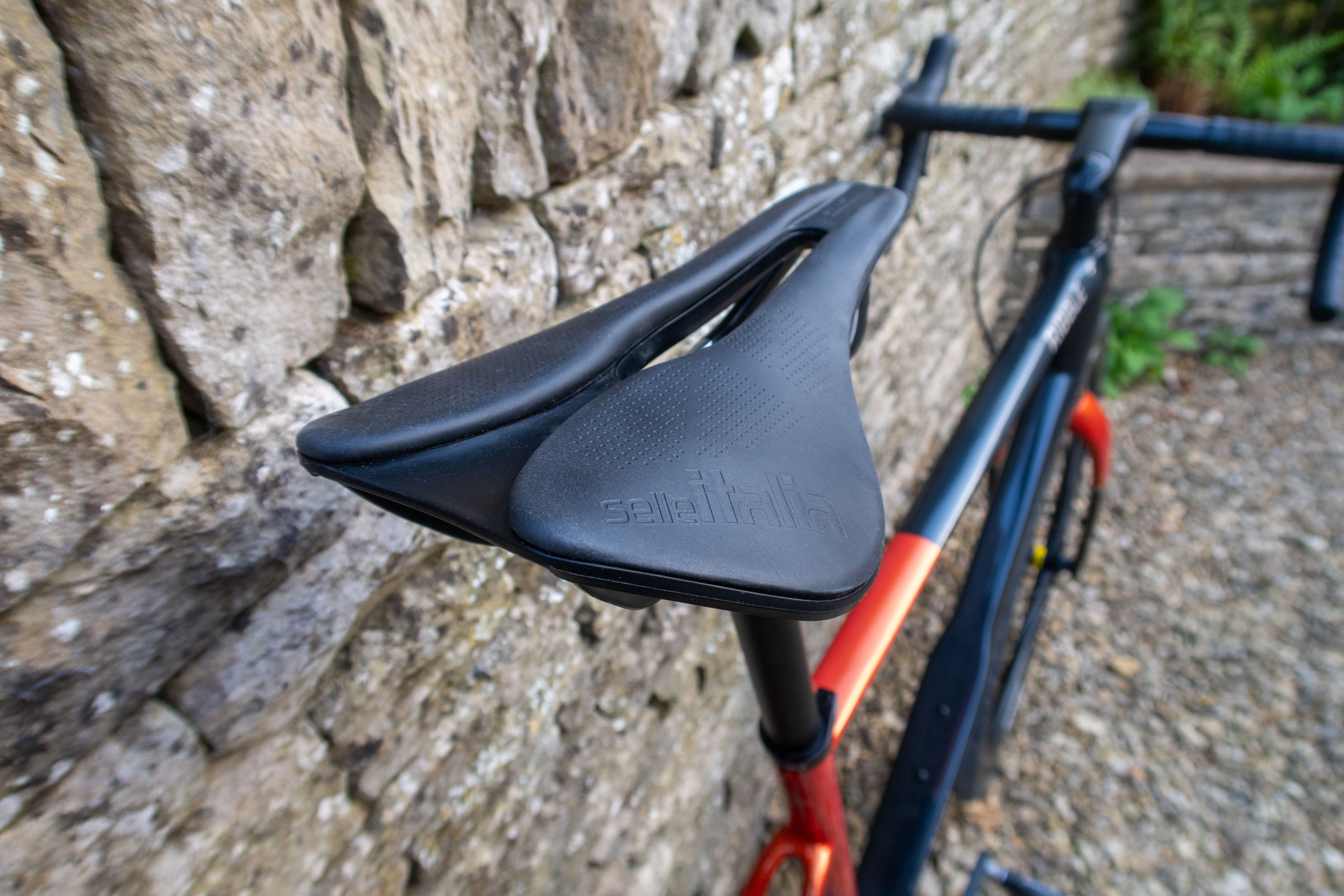
Compliance is excellent, but I suspect this is due to the 32mm tyres as much as it is the frame layup. My loaner was fitted with Pirelli P Zero Road TLR tyres, quality tyres with decent protection but too slick for all but the best-groomed off-road sections. Nevertheless, they enabled me to link up sections of tarmac via the occasional, easily navigable bridlepath or smooth gravel trail. I’m not sure that swapping them out for a wider 35c slick tyre would make that much difference but a more defined tread pattern – a set of Pirelli Cinturato Gravel RC tyres perhaps – would, but at the expense of rolling resistance on tarmac.
It was refreshing to see a set of Mavic wheels specified on my Pro build, for old time’s sake, if nothing else. As carbon wheels go, the Cosmic S 42 Disc set falls at the budget end of the market, but they look the business, perform well and are relatively lightweight at 1,660g. Frankly, it’s impressive to see almost a grand’s worth of wheels on a three-grand bike. Their versatile 21mm internal width enables the mounting of 25mm tyres, if you must go that narrow, right up to 65mm monsters, which, of course, won’t clear the SL’s stays.
Remarkably for its price, the Pro build also features 12-speed Shimano 105 Di2, with a 50/34t compact chainset up front and a 11-36t cassette at the rear. This is a great choice of ratios for endurance riding over hilly terrain – I certainly worked my way through every cog here in the Cotswolds - but if you live somewhere flatter, you’ll probably hunger for some meatier gears to achieve a higher top-end speed. As expected, Shimano’s 105 Di2 gruppo performed flawlessly.
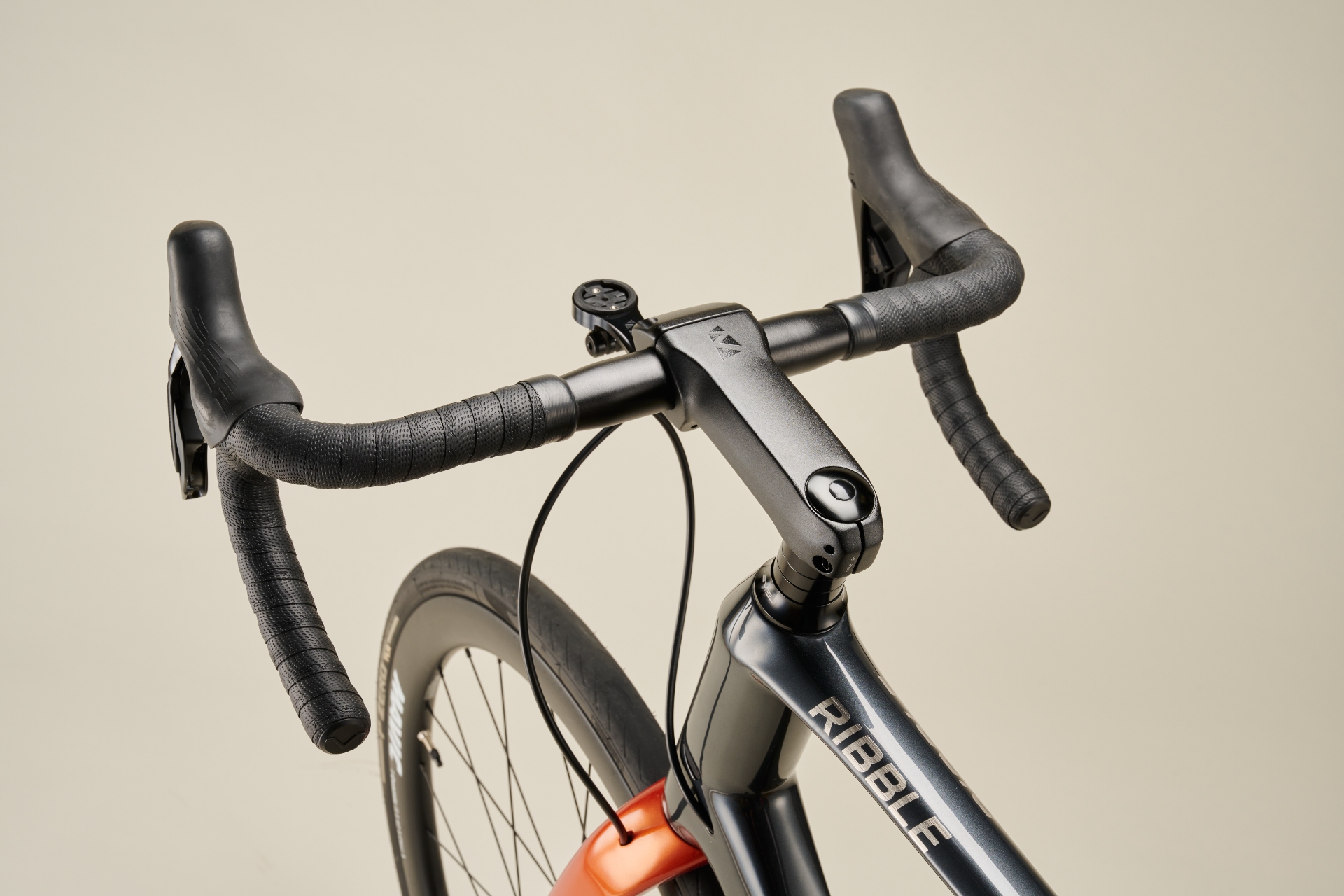
The SL’s cockpit is my least favourite area of the bike, which is a shame because it’s a vital contact point. The semi-oval alloy bars are Ribble’s own Level model, a compact set that’s comfortable enough but a little ‘meh’. Bolting on a more ergonomic set, with narrower tops and slightly flared drops, would be one of the few upgrades I’d invest in.
I didn’t tackle any mammoth rides on the SL but several reached around the 100km mark, so a few good hours in the saddle. Most of these were big Cotswold loops on minor backroads, passing through fields neatly clipped by sheep, densely wooded valleys and steep climbs gradually revealed by narrow, twisting lanes. Total ascent would be in the order of 1,400 metres.
The SL was a valued companion on these rides. Plenty fast enough to make decent progress, entertaining on the descents and sufficiently robust to shrug off the varied road surfaces. It’s also an immensely comfortable bike. Ever experienced that awful ‘I want to get off now’ feeling three-quarters of the way through a ride? Well, I never felt the need to end a ride early due to discomfort on the SL.
Value
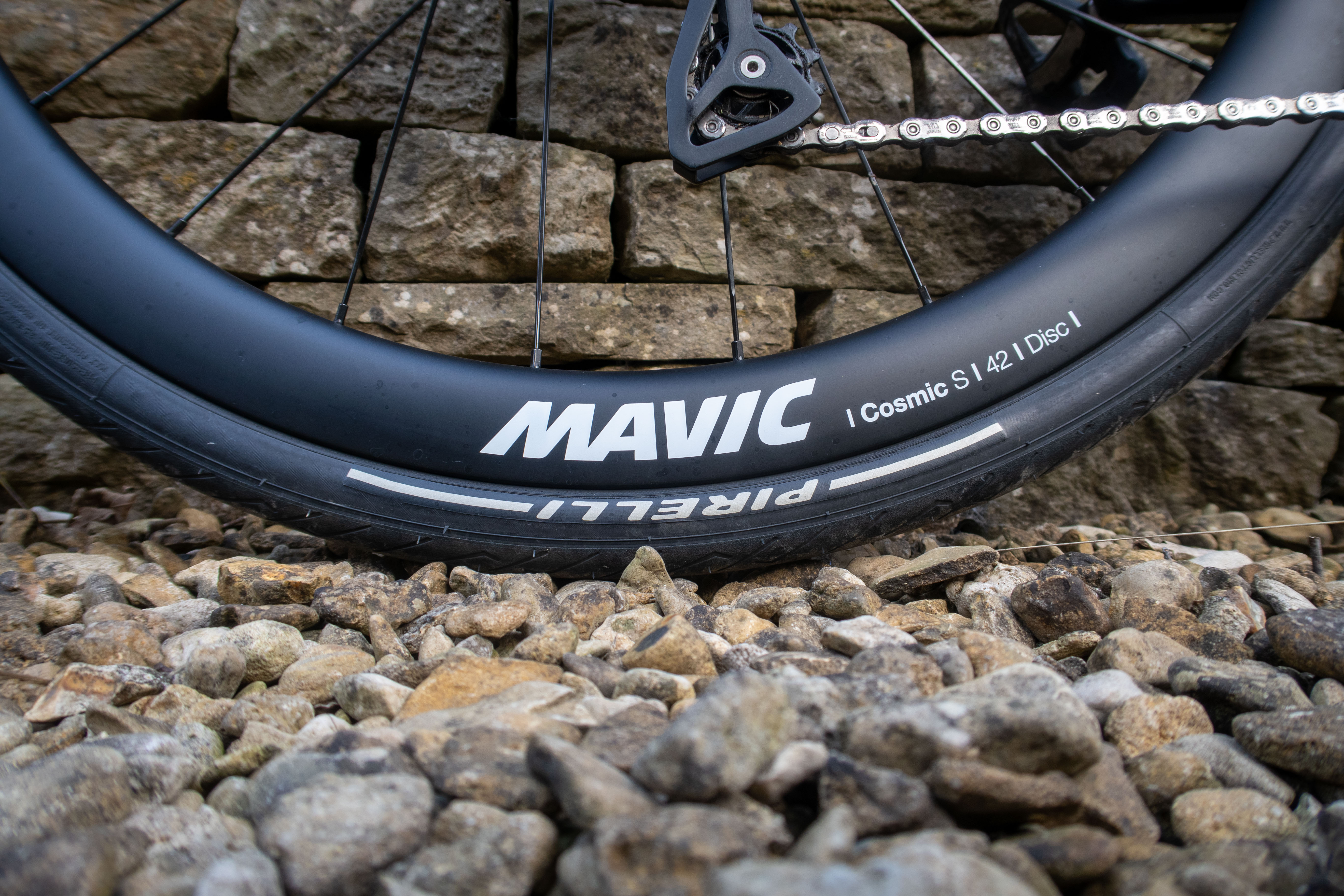
The price of the Allroad SL in Pro build is little more than the combined RRP of its Mavic carbon wheelset and the Shimano Di2 groupset. Sure, if you look in the right place you can buy either component heavily discounted but, nevertheless, the £2,999 SL Pro represents stonking value for money.
However, I’d be tempted to save a third of that cost by opting for the Enthusiast build with its Shimano 105 mechanical groupset and alloy Mavic Aksium wheels. This is where the real value is to be found - 95 percent of the ride feel and performance for 66 percent of the cost.
This is where the real value is to be found - 95 percent of the ride feel and performance for 66 percent of the cost.
Alternatively, the base SL Sport, with the same Aksium wheels but Tiagra 10-speed makes for a stonking winter bike or an excellent newbie ride.
Ribble is competitive with its pricing because it’s a direct-to-consumer brand. Even so, it still manages to undercut similar brands such as Canyon. It’s tricky to compare one brand’s bike model against another because the components are unlikely to match, but Ribble’s Allroad SL range is marginally less expensive than similar-level Canyon Endurace models.
Specs
For the Allroad SL in Pro build:
- Frame and fork: Mix of Toray 700 and 800 carbon fibre
- Bottom Bracket: BBR60 68mm
- Groupset: Shimano 105 Di2 12-speed
- Cassette: CS-HG710 12spd Cassette HG 11-36T
- Chainset: FC-R7100 105 12spd Chainset 165mm 50-34T
- Brake rotors: RT70 CL Rotor 160mm
- Wheelset: Mavic Cosmic S 42 Disc Carbon
- Tyres: P Zero Road TLR Black 700x32mm
- Handlebar: Level Alloy Handlebar
- Stem: RS-2 Stem 80mm
- Saddle: Selle Italia Model X Superflow
- Claimed weight for size M: 8.8kg
- Actual weight for size XL: 9.28kg







